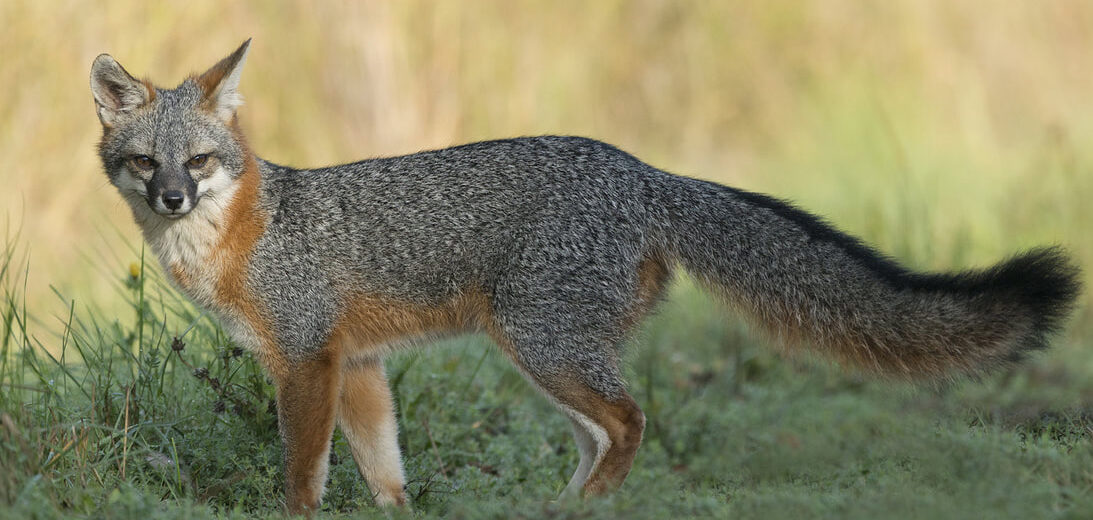
The gray fox, aka tree fox or common grey fox, can be found from Canada all the way down to the northern part of South America. They like deciduous forests with bushy, woodland areas, next to water. They can also be found near where forests meet farmlands. These foxes are sometimes confused with red foxes, seeing as red foxes can have a silvery-gray coloration at times. Due to their distribution and numbers, these critters are listed as Least Concern by the IUCN.
First the Stats…
Scientific name: Urocyon cinereoargenteus
Weight: Up to 15 lbs.
Length: Up to 2 feet, plus an 18 inch tail
Height: Up to 16 inches
Lifespan: Up to 15 years
Now on to the Facts!
1.) Sans mating season, these foxes are solitary.
2.) They are predominantly nocturnal (active at night) but have been observed exhibiting diurnal (active during the day) habits.
3.) A group of foxes is called a skulk, earth, leash, troop, or a lead.
4.) These foxes typically make their dens in rocky crevices, caves, hollow logs, and trees.
5.) What does the fox say? The gray fox makes barking sounds, squeals, and growls, mostly.
But wait, there’s more on the gray fox!
6.) The gray fox preys on voles, mice, rabbits, birds, and insects (like crickets and grasshoppers). They will also eat apples, berries, corn, nuts, and grass. This makes them omnivores (eat plant and animal matter).
7.) Gray foxes are seasonally monogamous (mate with one partner each season).
Did you know…?
The gray fox is skilled at climbing even vertical tree trunks.
8.) After up to a 53 day gestation (pregnancy) the female will birth up to 5 kits.
9.) Both mom and dad raise their young. The male typically is responsible for bringing food to his family. I guess you can say, “He brings home the bacon”.
10.) When scaling down from trees, they will either climb backwards or just run head first.
But wait, there’s still more on the gray fox!
11.) Cougars, bobcats, coyotes, eagles, owls, hawks, and humans all prey on gray foxes.
12.) If a gray fox has more food than it can handle, it will hide (cache) the remaining food and come back to eat it later on. They will mark the spot by peeing on it.
Now a Short Gray Fox Video!
Be sure to share & comment below! Also, check out the Critter Science YouTube channel. Videos added frequently!
Want to suggest a critter for me to write about? Let me know here.



